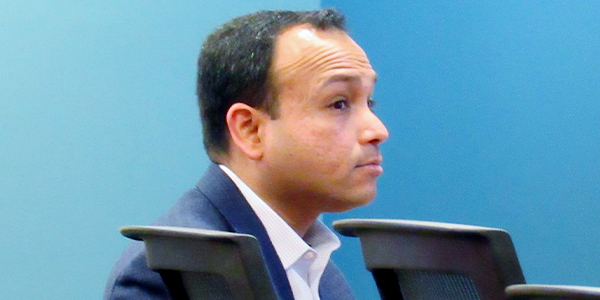By Amanda Durish Cook
CARMEL, Ind. — MISO’s special analysis into the Minnesota-Wisconsin export interface constraint could inspire similar studies to solve non-thermal operating limits in other parts of its system.
“We are expecting several non-thermal constraints in the future, including voltage issues [and] stability issues that will limit the delivery of energy from high renewable energy penetration to load centers,” MISO Resource Interconnection Planning Manager Neil Shah told stakeholders at the Planning Advisory Committee’s Wednesday meeting.
The constraint, known as MWEX, is the subject of a special study this year as part of the 2020 MISO Transmission Expansion Plan (MTEP 20), dubbed the North Region Economic Transfer Study. (See “MTEP 20 Gains Unique Study,” MTEP 19 Advances to MISO Board Committee.)
MISO said the study will evaluate non-thermal constraints between high renewable areas in the northwestern portion of its footprint and load centers. The RTO said it’s especially expecting “bottlenecks” in its North Region, which already contains high wind penetration.
Shah said the RTO will project the area’s transmission needs 15 years into the future. The study may identify transmission solutions that would be subject to further studies.
He said MWEX has a “long history” in MISO.
“It’s not only being monitored in real time but in other planning studies,” Shah said. “It appears very often in interconnection [studies], especially in MISO North and West.”
Some stakeholders have expressed doubt that an actual project to assist the area will materialize, pointing out that MWEX’s transfer limits are hard-coded as constraints in MISO economic planning models.
Entergy’s Yarrow Etheredge said transmission owners support the study because typical economic studies don’t consider non-thermal operational limits.
Shah said the study would serve as an introduction to MISO evaluating the impact of expected non-thermal system operation limits in other areas of the grid.
“How do we go from informational [study] to project approval?” Clean Grid Alliance’s Natalie McIntire asked, with others echoing the question.
“We’re going to keep our options and use this information in any planning studies open next year or later this year,” Shah said of study results, adding that they may also “feed into” MTEP 21 efforts.
MISO plans to reveal a final study scope by the Feb. 12 PAC meeting. It expects to wrap up the study and announce potential recommendations in September.





